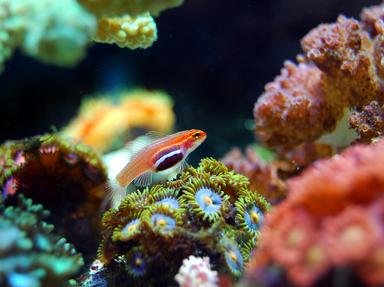Quiz Answer Key and Fun Facts
1. For the sceptics in the audience, I highly recommend Richard Dawkins' "The Ancestor's Tale" (2005) if you are having trouble reconciling that we humans can be descended from jellyfish. Alternatively you could try this quiz and possibly become a little less sceptical. Let's establish a timeline: By what period are we certain that jellyfish have evolved?
2. OK, let's work out some taxonomy. Are jellyfish fish?
3. Jellyfish are 95% water. That must make it difficult to move. How do jellyfish move though the water? (Hint: It would have been useful for us humans if this method was passed along the evolutionary pathway).
4. So if we as humans have evolved from jellyfish, surely jellyfish have a heart and a brain. Which of these organs do jellyfish possess?
5. All animals need air of some type. Fish have gills, even plants exchange gasses. Jellyfish do need oxygen so does a jellyfish have an organ dedicated to oxygen intake?
6. All animals must eat. How does a jellyfish eat?
7. The jellyfish mouth is a multi-functional structure. Which one of the following physiological functions does not involve the mouth?
8. Jellyfish, being a fairly primitive organism, one would expect that jellyfish have only a rudimentary reproductive system. This does not appear to be the case. What is the method of reproduction for jellyfish?
9. As it is becoming more accepted that jellyfish are a common ancestor, can we trace sight, arguably humans' most important sense, back to the jellyfish?
10. When we assign collective nouns to animals we often assign distinctly human traits (For example, a murder of crows, a parliament of owls). Jellyfish are no exception. Which of the following terms is *NOT* a collective noun for a group of jellyfish?
Source: Author
1nn1
This quiz was reviewed by FunTrivia editor
Tizzabelle before going online.
Any errors found in FunTrivia content are routinely corrected through our feedback system.

